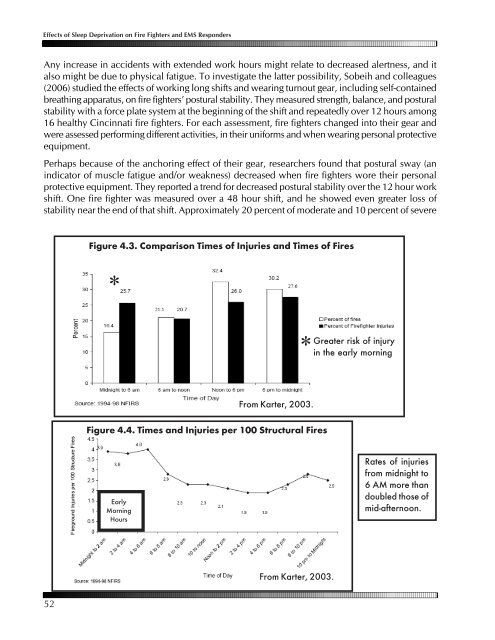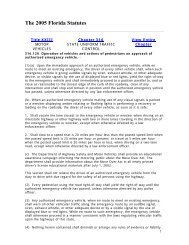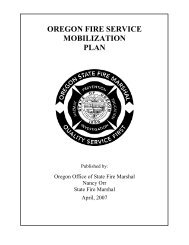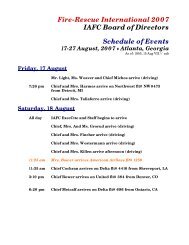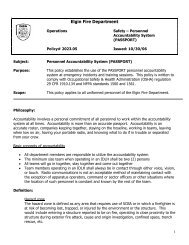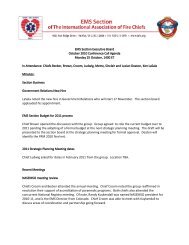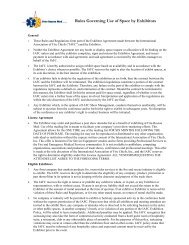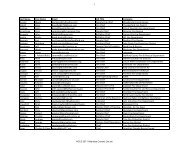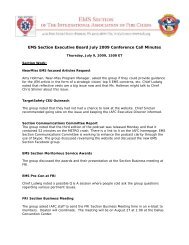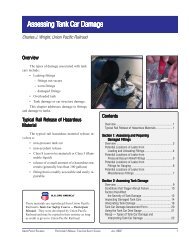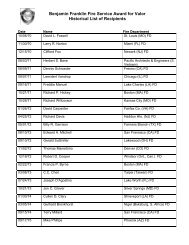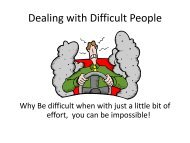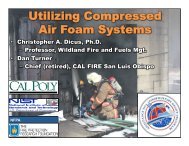Effects of Sleep Deprivation on Fire Fighters and EMS ... - NAEMT
Effects of Sleep Deprivation on Fire Fighters and EMS ... - NAEMT
Effects of Sleep Deprivation on Fire Fighters and EMS ... - NAEMT
Create successful ePaper yourself
Turn your PDF publications into a flip-book with our unique Google optimized e-Paper software.
<str<strong>on</strong>g>Effects</str<strong>on</strong>g> <str<strong>on</strong>g>of</str<strong>on</strong>g> <str<strong>on</strong>g>Sleep</str<strong>on</strong>g> <str<strong>on</strong>g>Deprivati<strong>on</strong></str<strong>on</strong>g> <strong>on</strong> <strong>Fire</strong> <strong>Fighters</strong> <strong>and</strong> <strong>EMS</strong> Resp<strong>on</strong>ders<br />
Any increase in accidents with extended work hours might relate to decreased alertness, <strong>and</strong> it<br />
also might be due to physical fatigue. To investigate the latter possibility, Sobeih <strong>and</strong> colleagues<br />
(2006) studied the effects <str<strong>on</strong>g>of</str<strong>on</strong>g> working l<strong>on</strong>g shifts <strong>and</strong> wearing turnout gear, including self-c<strong>on</strong>tained<br />
breathing apparatus, <strong>on</strong> fire fighters’ postural stability. They measured strength, balance, <strong>and</strong> postural<br />
stability with a force plate system at the beginning <str<strong>on</strong>g>of</str<strong>on</strong>g> the shift <strong>and</strong> repeatedly over 12 hours am<strong>on</strong>g<br />
16 healthy Cincinnati fire fighters. For each assessment, fire fighters changed into their gear <strong>and</strong><br />
were assessed performing different activities, in their uniforms <strong>and</strong> when wearing pers<strong>on</strong>al protective<br />
equipment.<br />
Perhaps because <str<strong>on</strong>g>of</str<strong>on</strong>g> the anchoring effect <str<strong>on</strong>g>of</str<strong>on</strong>g> their gear, researchers found that postural sway (an<br />
indicator <str<strong>on</strong>g>of</str<strong>on</strong>g> muscle fatigue <strong>and</strong>/or weakness) decreased when fire fighters wore their pers<strong>on</strong>al<br />
protective equipment. They reported a trend for decreased postural stability over the 12 hour work<br />
shift. One fire fighter was measured over a 48 hour shift, <strong>and</strong> he showed even greater loss <str<strong>on</strong>g>of</str<strong>on</strong>g><br />
stability near the end <str<strong>on</strong>g>of</str<strong>on</strong>g> that shift. Approximately 20 percent <str<strong>on</strong>g>of</str<strong>on</strong>g> moderate <strong>and</strong> 10 percent <str<strong>on</strong>g>of</str<strong>on</strong>g> severe<br />
Figure 4.3. Comparis<strong>on</strong> Times <str<strong>on</strong>g>of</str<strong>on</strong>g> Injuries <strong>and</strong> Times <str<strong>on</strong>g>of</str<strong>on</strong>g> <strong>Fire</strong>s<br />
*<br />
*<br />
Greater risk <str<strong>on</strong>g>of</str<strong>on</strong>g> injury<br />
in the early morning<br />
From Karter, 2003.<br />
Figure 4.4. Times <strong>and</strong> Injuries per 100 Structural <strong>Fire</strong>s<br />
Early<br />
Morning<br />
Hours<br />
Rates <str<strong>on</strong>g>of</str<strong>on</strong>g> injuries<br />
from midnight to<br />
6 AM more than<br />
doubled those <str<strong>on</strong>g>of</str<strong>on</strong>g><br />
mid-afterno<strong>on</strong>.<br />
From Karter, 2003.<br />
52


